
5 May
Final Update
Unfortunately, my site has not changed very much since my last visit. I think that the fact that this past week has been mostly in the 40s and 50s probably prevented any major changes in the appearance of the plants at my site. The trees are still budding, with no signs of leaves yet. I did see some birds at my site during this visit. There were two Black-capped Chickadees, which I have seen before at my site, and a Tufted Titmouse. I also found a feather that looked like it probably belonged to either an American Robin or a Gray Catbird. I think that nature and the culture of Vermont do intertwine at my place. Vermont is a state where people love to get outdoors and explore nature, especially by hiking. My place is next to a trail in Centennial Woods, and I always run in to a diverse array of Vermonters hiking along the trails around my site. Whether it is a young family, an older couple, or someone taking their dog for a hike, you can tell by being at my place that exploring the outdoors is a big part of the culture of Vermont, and that is a nice thing to see, especially for someone like me who grew up in a very developed area. I do feel like a part of my place. I have visited it countless times over the year, and I feel like I know the position of every tree, and am familiar with all aspects of the land. It will definitely be a spot that I continue to visit upon my return to UVM in the fall.
22 Apr
April Update
When I visited my site this week, I did not discover any flowers pushing up yet. However, the ferns were noticeable for the first time in a while, particularly the Christmas Fern. It was quite muddy at my site as a result of all the rain we have had recently. The majority of trees on my site are Eastern White Pine and Eastern Hemlock, so they have been green all winter. The Yellow Birch and Red Oak have not yet begun to grow leaves; they still seem to be in the bud stage. My site was unusually quiet during my visit. Usually I can hear lots of bird activity. On my way through Centennial, I saw Northern Cardinals and Black-capped Chickadees, as well as hearing Brown Creeper, Song Sparrow, and White-breasted Nuthatch, but my site itself was quiet. There was evidence of animal activity at my site, as I came across droppings from a White-tailed Deer. The sketch I have included is of a large Eastern White Pine that fell over, and the young Yellow Birch growing out of the base of it.
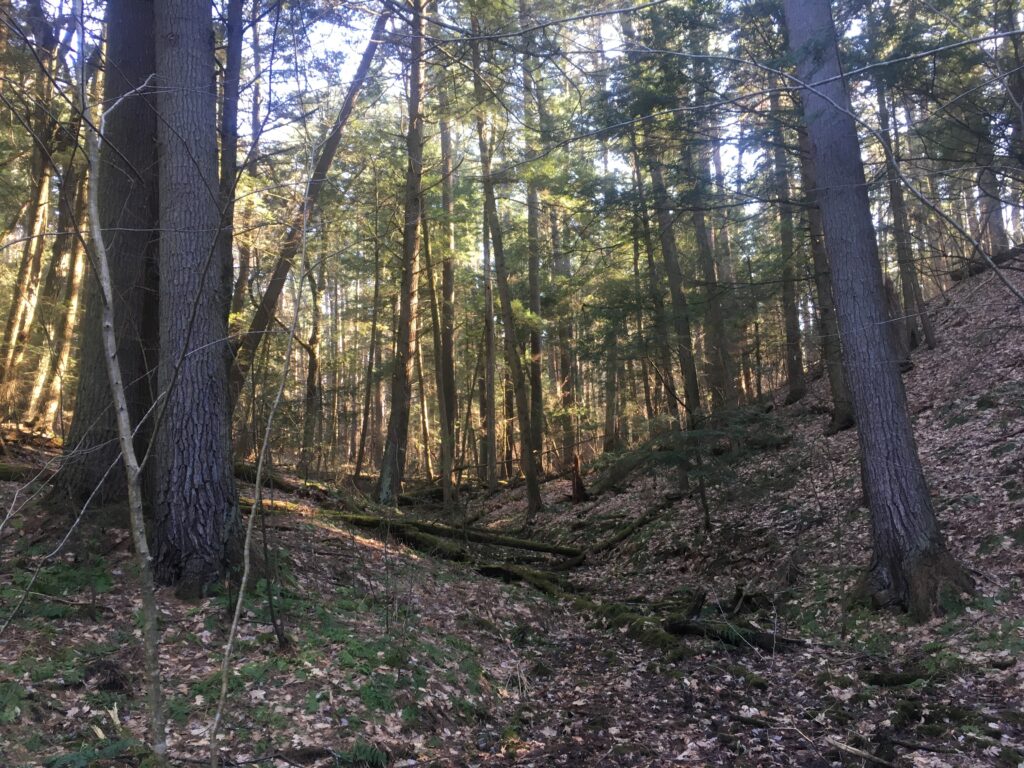
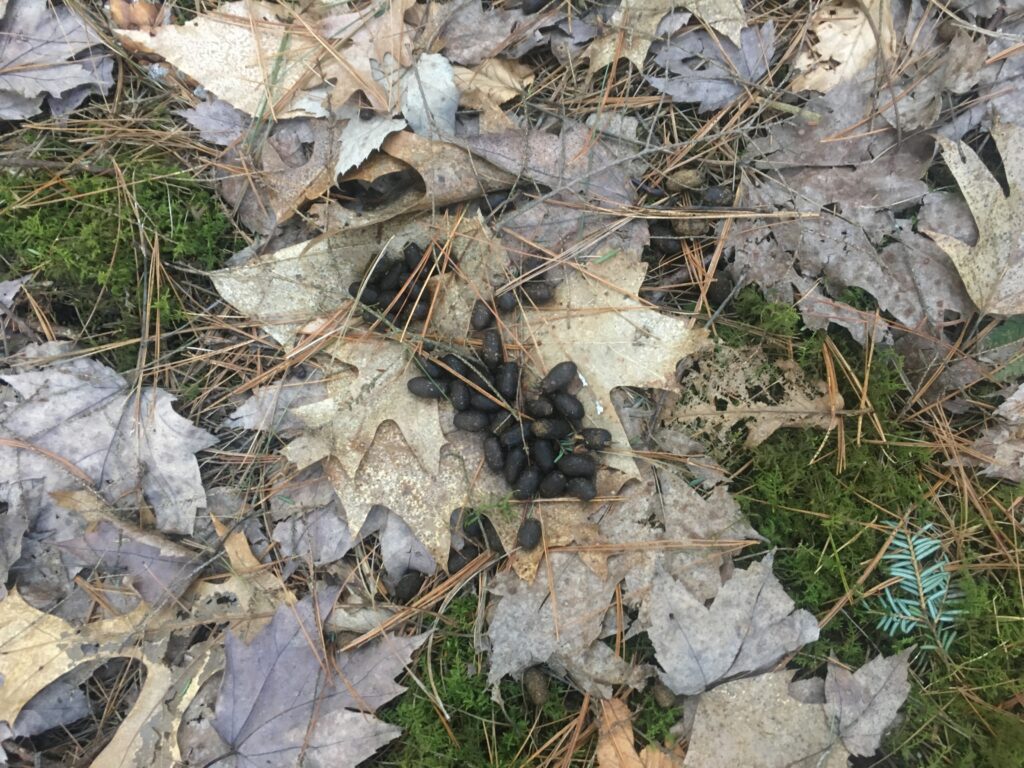
17 Mar
Spring Break Update
The site that I chose to visit over break was the pond and a patch of the surrounding forest at the end of my street in Rockaway, NJ. When I visited this site, NJ had been on a warm streak for a few days and I was unfortunately unable to see any tracks due to the lack of snow. I was able to determine which tree species were most common on my site. The three most prominent species were Yellow Birch, Red Maple, and American Beech. My site in Centennial Woods also contains many Yellow Birch and a few Red Maple, but no American Beech. I believe that the occurrence of Yellow Birch at both sites is because both contain moist, swampy soils that Yellow Birch thrive in. My site in NJ contains a lot more small woody plants than my Centennial Woods site, and unfortunately I was unable to identify most of them. There was an abundance of Common Reed Grass along the water’s edge. This grass is not found in my Centennial Woods site due to the absence of water. There was not an abundance of Christmas Fern at my NJ site like there is in Centennial. I know from past experiences that there are ferns on my NJ site, but they are species that die in the winter and come back in the spring like Cinnamon Fern or Hay-scented Fern. I encountered many birds at my site in NJ. I witnessed a Mute Swan foraging through the weeds in the water, and another swan that was presumably its partner out further on the water. I identified a Tufted Titmouse and Black-capped Chickadee by their calls, although I could not locate them visually. A Red-tailed Hawk also flew over my site at one point. I have identified Black-capped Chickadees at my Centennial Woods site too. One bird I have seen in Centennial that I did not spot in NJ is the Pileated Woodpecker. My NJ site lies at the southern end of their range and it is quite uncommon to see them around.
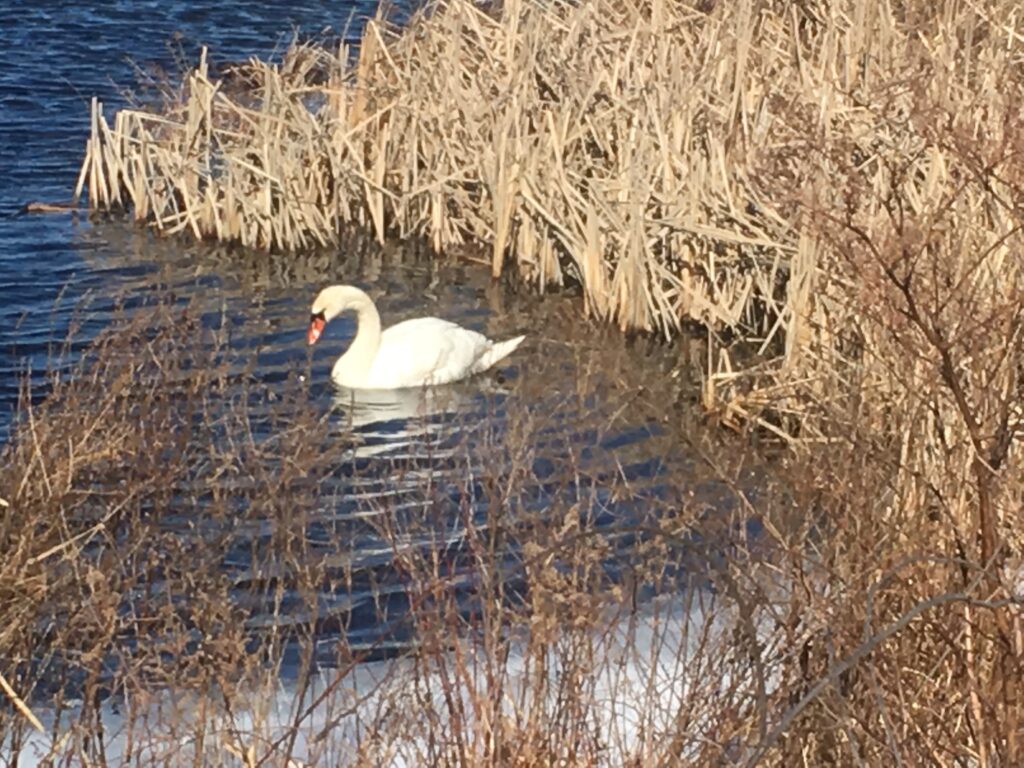
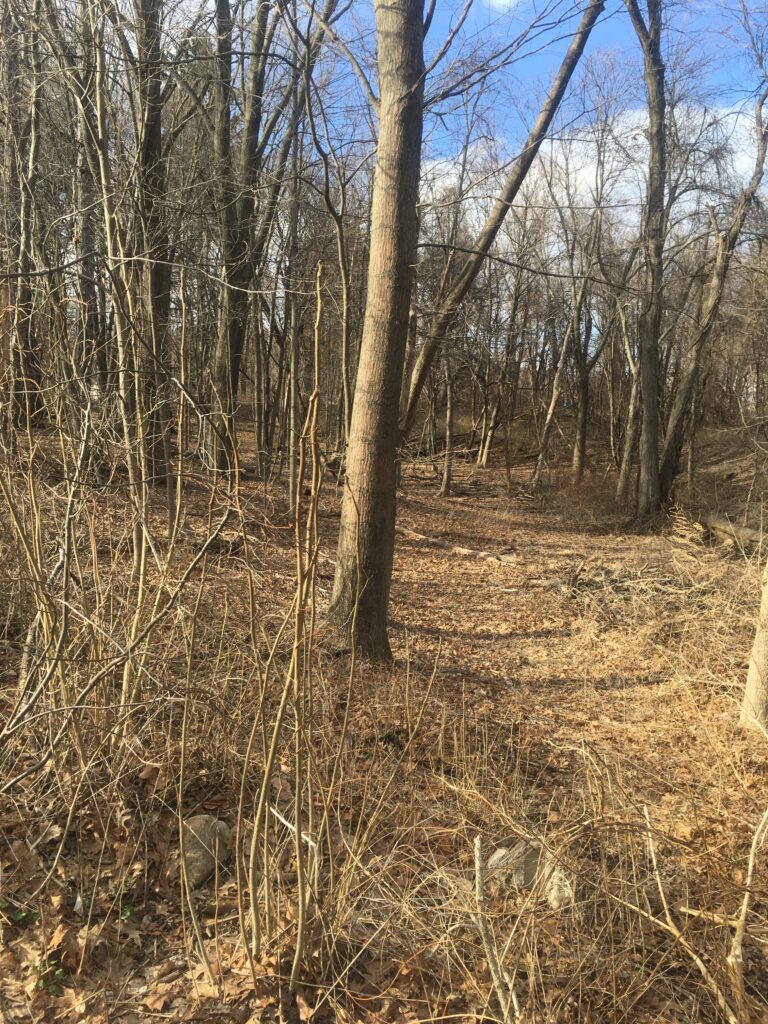
7 Mar
March Update
My site in its current condition does not really fit any of the natural communities defined in Wetland, Woodland, Wildland very well. Despite being a valley that tends to collect precipitation, I don’t think that it has the potential to ever accumulate enough to be considered a marsh or swamp. It also certainly isn’t a beach or lake shore. That leaves the different kinds of forests as options. Currently, the most abundant trees at my site are Eastern Hemlock, White Pine, and Yellow Birch. That doesn’t really match any of the forest communities given, but I can make assumptions about the soil type at my site based on the trees living there. All three of these species prefer acidic soil. Knowing that the soil at my site is likely acidic, I can predict which natural forest community it has the potential to be. Anything with limestone or high amounts of calcium is eliminated, as that would indicate basic soil. An Oak/Hickory/Hophornbeam community is possible, as there are a few Red Oaks on my site. However, I have not seen any Hickory or Hophornbeam anywhere in the area. My site could also be considered a Valley Clayplain forest, as these sites were formerly very common in Burlington and often used as farmland, just like Centennial Woods was. Overall, I think the best way to describe my site is a Northern Hardwood Forest that happens to have a lot of conifers in this one spot.
In terms of phenological changes, my site has not changed much since the last time that I was there. There is still a thick layer of snow and ice covering the forest floor, and the trees are still bare. Buds are beginning to form, but there are no leaves yet. The conifers are still green, as they always are. Under the snow, the ice covering the bottom of the valley that makes up my site is at least 2 inches thick. Below that, the ground, which is usually somewhat muddy, is also frozen solid.
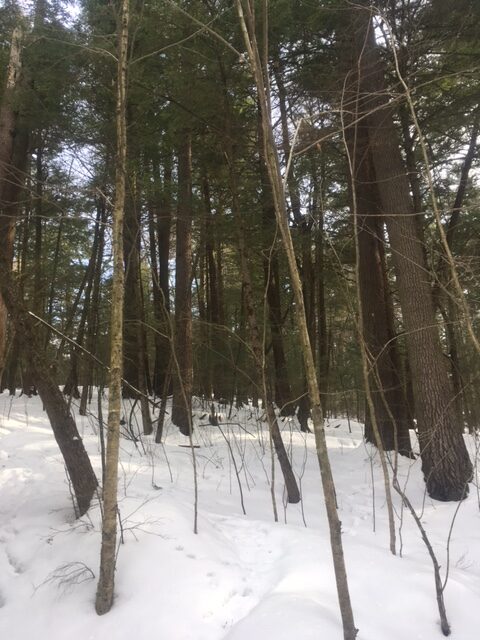
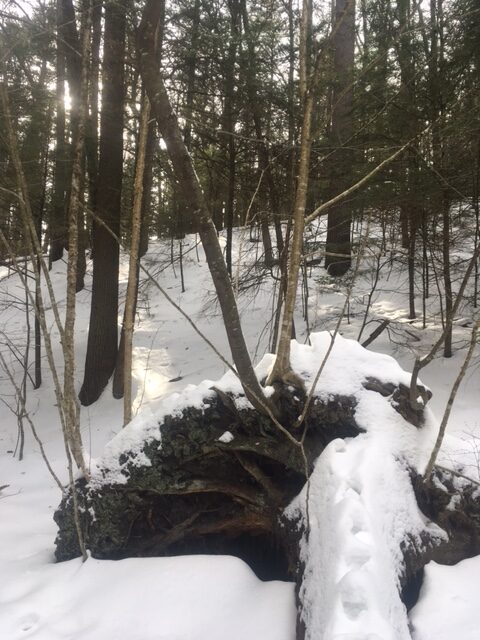

3 Feb
February Update
My site looks fairly similar to the last time that I visited, although it now has over a foot of snow as opposed to just a dusting. Unfortunately it snowed the night before I visited, so many of the tracks I encountered were not very clear. The majority of tracks on my site seemed to be from White-tailed deer. They were in a diagonal walking pattern, and I was able to make out the slightest hint of a hoof mark in some of the tracks despite all the new snow that had fallen on them. However, I was unsure until I encountered a pile of deer droppings right in the middle of the the tracks, thus confirming my suspicions. The snow is so deep that it almost seemed as though the deer could not lift its feet totally above the snow, so there were dragging marks between each print. I encountered many Yellow Birch twigs with buds on them. I’m pretty sure I found a very young Paper Birch with buds although I’m not positive. There are some Sugar Maples on my site, but I could not find any twigs because of how tall they are. 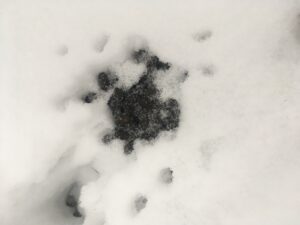
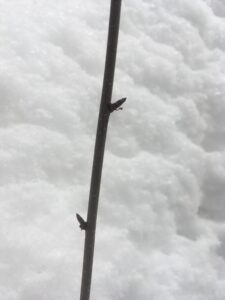
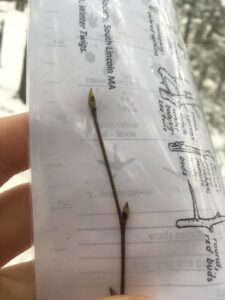
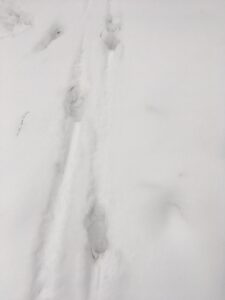
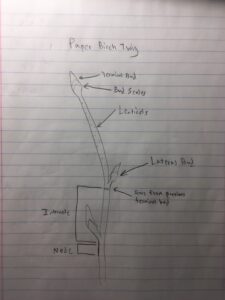
6 Dec
December Update
My last visit to my site for the semester came in early December on a very snowy day. My site looked like something straight out of a Christmas card due to all of the evergreens with snow lightly dusted on them. All the deciduous trees on my site have lost all their leaves, but the Eastern White Pines and Eastern Hemlocks are as green as ever. The Eastern Hay Scented Ferns are still green, adding a little bit more color to the understory. I was lucky enough to come across some tracks in the snow on my site, including deer and squirrel. There are many clues on the trail leading to my site about the land use history of Centennial Woods. If you look carefully, you will find loose strands of barbed wire that would indicate that cattle farming (stone walls would indicate sheep pastures) may have taken place in the late 1800s to early 1900s. A friend of mine actually ripped his pants leg on some barbed wire on the way to my site! There are also areas where the land was obviously cleared in the past 150 years, as there are very few old growth trees, and many Paper Birch, which thrive after disturbance. On my site there is a valley on a slight downward angle that I at first thought was possibly an old road, but it seems more logical that it used to be a stream. The largest trees on my site by far are the White Pines, which would also indicate disturbance in the past as White Pines grow much faster than most hardwood trees and tend to come in after disturbance, like Paper Birch.
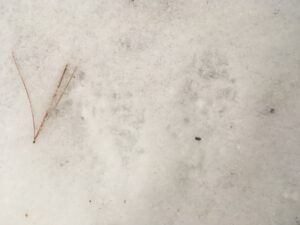
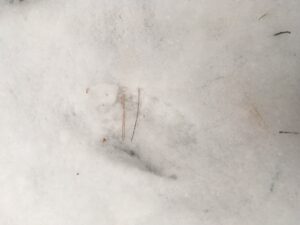
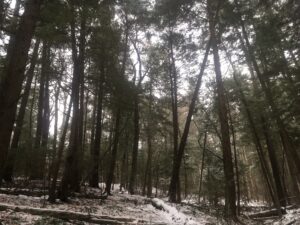
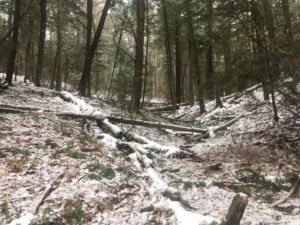
26 Nov
Phenology Site in New Jersey
The Phenology site that I explored over break is a little spot in the woods along a lake at the end of my street that I have frequented for my whole life. The lake drains into a stream that heads into the woods. Here is a link to its location on a map.
My site is an interesting place to visit regardless of the season. During the summer, you are likely to spot the Northern Water Snake that usually resides by the rocky edges of the lake, or if you are lucky, maybe even a Musk Turtle. Large mouth bass and Blue gills swim in circles, sometimes getting swept out of the lake and into the stream. Blue Herons lie patiently in the shallow areas, surrounded by cattails and duckweed, waiting for the right moment to strike at whatever small fish they are terrorizing at the moment. In the winter, there is much less activity, but my site is still worth a visit. There is a mating pair of Bald Eagles that nests along the lake every year, and it is always a thrill to spot one. Large quantities of Mute Swans seem to remain on the lake no matter how cold it gets. The same can be said for the White Tail Deer (in the woods surrounding the lake, of course). It is always fun to visit during spring, as you are likely to come across a Common Snapping Turtle or Painted Turtle laying its eggs, although they are usually devoured by a hungry skunk the next night.
The most visible difference between my site in Burlington and my site in New Jersey is the absence of water in my Burlington site. The quiet bubbling of the stream in my NJ site is a wonderful backdrop for a peaceful afternoon of thinking and reflection while staring at the quarry across the lake. Neither site offers complete isolation from human activity, as one is likely to be intruded upon by hikers in my little nook of Centennial Woods, while my site in NJ is often rocked by explosions from the nearby rock quarry and military testing facility. Despite this, I find tranquility at each through their unique features. In Centennial Woods, my site plays host to many of my favorite tree, the Eastern Hemlock. Although my NJ site features almost no conifers (which I prefer in general over hardwoods), I still find joy in the many varieties of aquatic vegetation, such as cattails, duckweed, water lilies, and water hyacinths that can be spotted on the lake. There seems to be more of an animal presence in my NJ site, as there are less people around. In Centennial, I have encountered only a pair of Pileated Woodpeckers and a few Chipmunks, while at my NJ site I have seen everything from massive carp to Black Bears.
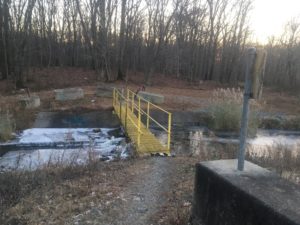

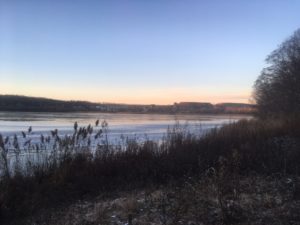
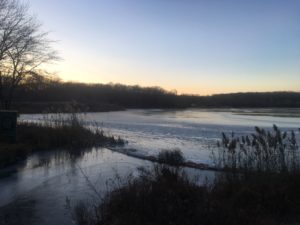
4 Nov
Update 11/5
After visiting my site on November 4th, I noticed some obvious changes from my last visit. Almost all of the deciduous trees have lost all of their leaves. There are a few Yellow Birch remaining that still have some of their leaves. The singular Barberry also still has its leaves, although they are now yellow. Due to the high amount of leaves dropped, there is a larger amount of parent material/organic matter on the forest floor, composed mostly of Yellow Birch leaves. The ground was also much wetter than it was at my last visit, due to the constant rain from the past week. In some areas at the base of the valley, water has even begun to pool a little bit. Meanwhile, the Cinnamon ferns that were yellowing at my last visit are now all but gone. They seem to have completely died and dissipated into the organic material covering the soil, whereas the Christmas ferns and Eastern Hay Scented ferns look no different than they did at my first visit. Moss is still very prevalent at my site, although much of it is now covered by leaves, so it is not as noticeable. The same holds true for the mushrooms. There was no sign of the Pileated Woodpeckers from my last visit, but I did encounter a Blue Jay. 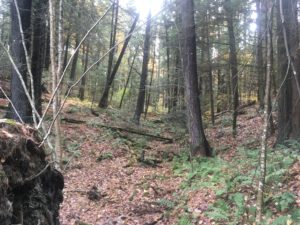
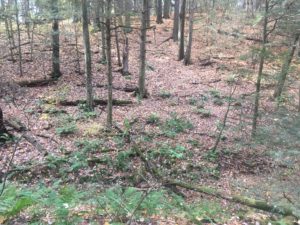
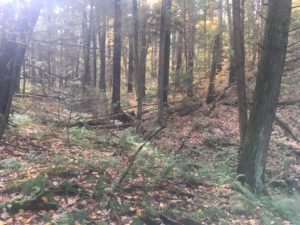
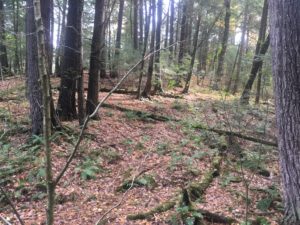
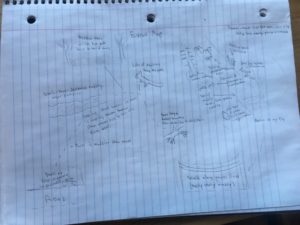 Here is a link to a bigger version of my Event Map: https://docs.google.com/document/d/14DnAlW5mjWJCV7bhKYZXJQtfiDM5nFU91Q0CMXF2IZE/edit
Here is a link to a bigger version of my Event Map: https://docs.google.com/document/d/14DnAlW5mjWJCV7bhKYZXJQtfiDM5nFU91Q0CMXF2IZE/edit
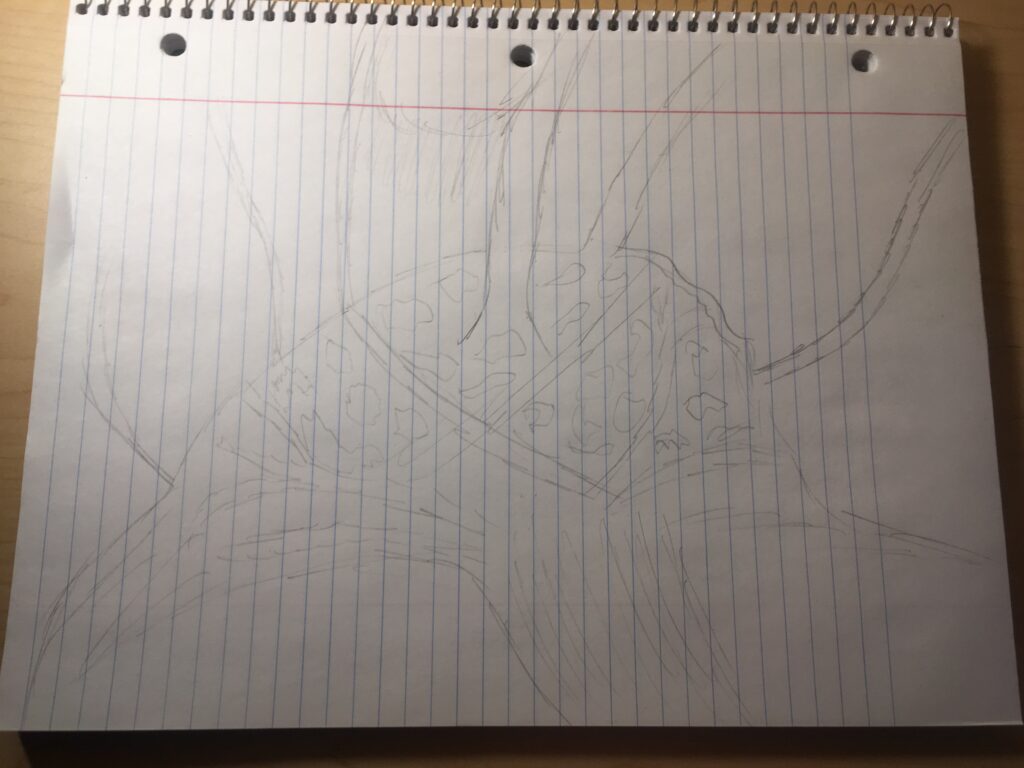
Recent Comments